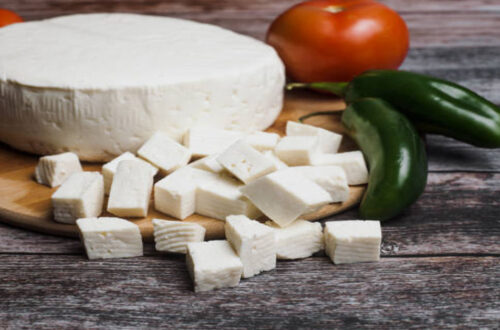Coffee is more than a beverage; it is a cultural phenomenon that transcends borders and generations. Among its many forms, the cappuccino stands out as one of the most recognizable and beloved coffee drinks worldwide. Characterized by its harmonious blend of espresso, steamed milk, and frothy foam, cappuccino has become a symbol of European coffee culture and a staple in cafes, homes, and workplaces across the globe. Beyond its distinct taste and aesthetic appeal, cappuccino represents an intersection of art, science, and social tradition.
In this article, we explore cappuccino in detail: from its historical origins and evolution to preparation methods, nutritional benefits, cultural significance, and even innovative variations. Whether you are a coffee enthusiast, a barista in training, or simply curious about this iconic drink, this comprehensive guide offers rich, detailed insights into every aspect of cappuccino.
1. The Historical Origins of Cappuccino
The word cappuccino derives from the Italian “cappuccio”, meaning hood, referencing the color of the robes worn by Capuchin monks. Early descriptions of the drink date back to 17th and 18th-century Europe, when coffee began to gain popularity across Italy, Austria, and France.
The modern cappuccino, however, as we know it today, emerged in Italy in the early 20th century, after the invention of the espresso machine. These machines allowed for the precise brewing of concentrated coffee, which could then be mixed with steamed milk and topped with airy foam, creating a balanced combination of strong coffee and creamy texture.
Historically, cappuccino was not only a beverage but also a social ritual. In Italy, it is traditionally consumed in the morning, often accompanied by pastries, as a symbol of leisure and refinement. The drink’s cultural significance extends beyond its taste—it reflects Italian design philosophy, combining simplicity, elegance, and functional craftsmanship.
2. Understanding Cappuccino: Composition and Characteristics
Cappuccino is defined by its three-part structure:
- Espresso: A concentrated shot of coffee made by forcing hot water through finely ground beans.
- Steamed Milk: Milk that is heated and slightly aerated to create a creamy consistency.
- Milk Foam: Light, velvety foam that caps the drink, often dusted with cocoa or cinnamon.
Table: Standard Cappuccino Composition
| Component | Percentage of Total Volume | Role |
|---|---|---|
| Espresso | 25–30% | Provides strong coffee flavor |
| Steamed Milk | 35–40% | Adds creaminess and smooth texture |
| Milk Foam | 30–35% | Creates light, airy top layer |
| Optional Toppings | 0–5% | Enhances aroma, visual appeal |
The balanced ratio of coffee, milk, and foam distinguishes cappuccino from other espresso-based beverages, such as lattes (more milk, less foam) or macchiatos (espresso with minimal milk).
3. Preparation Techniques
Crafting a perfect cappuccino requires precision, skill, and attention to detail. The process can be broken down into three stages: espresso extraction, milk steaming, and assembly.
3.1 Espresso Extraction
- Use freshly ground coffee, ideally medium-dark roast.
- Brew a shot of espresso with 7–9 grams of coffee per 30 ml of water.
- The ideal extraction takes approximately 25–30 seconds to achieve rich crema and aroma.
3.2 Milk Steaming
- Pour cold milk into a frothing pitcher.
- Position the steam wand just below the surface to create microfoam.
- Heat milk to 60–65°C (140–150°F) for optimal sweetness and texture.
- Ensure the foam is velvety and smooth, free of large bubbles.
3.3 Assembly
- Pour the espresso into a cup.
- Gently add steamed milk to blend with the espresso.
- Spoon or pour the foam on top, creating a distinct layer of froth.
- Optional finishing touches: a dusting of cocoa, cinnamon, or latte art.
4. Coffee Beans for Cappuccino
The choice of beans significantly affects the flavor profile. Most baristas recommend Arabica beans for cappuccino due to their smooth taste and balanced acidity. However, blends with robustas can add body and crema.
| Bean Type | Flavor Profile | Impact on Cappuccino |
|---|---|---|
| Arabica | Mild, aromatic, slightly acidic | Smooth taste, ideal for milk blending |
| Robusta | Strong, earthy, bitter | Enhances crema, adds intensity |
| Blends | Balanced | Combines aroma and strength for optimal cappuccino |
The grind size is also crucial: too coarse leads to weak espresso, too fine causes over-extraction and bitterness.
5. Nutritional Value of Cappuccino
Cappuccino is not just enjoyable but can also fit into a balanced diet, depending on preparation.
Table: Approximate Nutritional Composition per 150 ml Cappuccino
| Nutrient | Amount | Health Role |
|---|---|---|
| Calories | 80–120 kcal | Provides moderate energy |
| Protein | 4–6 g | Supports muscle repair |
| Fat | 3–5 g | Contributes to satiety |
| Carbohydrates | 8–10 g | Quick energy from lactose |
| Calcium | 120–150 mg | Supports bone health |
| Caffeine | 60–80 mg | Enhances alertness |
| Antioxidants | Moderate | Helps neutralize free radicals |
Cappuccino’s moderate caffeine content can boost mental alertness without excessive stimulation, making it a preferred choice for morning or mid-morning consumption. The milk also adds calcium, vitamin D, and proteins, enhancing its nutritional value.
6. Health Benefits of Cappuccino
6.1 Cognitive Enhancement
Caffeine in espresso can improve focus, memory, and alertness. Drinking cappuccino in moderation may enhance productivity and reduce mental fatigue.
6.2 Cardiovascular Health
Moderate coffee consumption has been linked to reduced risks of heart disease. The antioxidants in coffee help protect blood vessels and lower inflammation.
6.3 Bone Health
Milk provides calcium and vitamin D, crucial for bone density and strength, particularly beneficial for those with limited dietary calcium intake.
6.4 Mood and Mental Wellbeing
Caffeine stimulates dopamine release, enhancing mood and potentially reducing the risk of depression.
6.5 Antioxidant Properties
Espresso contains polyphenols that combat oxidative stress. When combined with milk, cappuccino offers a balanced, antioxidant-rich beverage.
Note: Excessive consumption may lead to insomnia, increased heart rate, or digestive discomfort. Moderation is key.
7. Cappuccino Variations Around the World
Cappuccino has evolved globally, with cultural adaptations shaping its presentation and taste.
7.1 Italian Classic
- 1/3 espresso, 1/3 steamed milk, 1/3 foam
- Typically consumed before 11 a.m.
- Served in a 150–180 ml cup
7.2 Viennese Cappuccino
- Includes whipped cream instead of milk foam
- Often topped with chocolate shavings
- Richer and dessert-like
7.3 Iced Cappuccino
- Espresso with chilled milk and foam over ice
- Popular in warm climates, refreshing alternative
7.4 Flavored Cappuccino
- Incorporates syrups (vanilla, caramel, hazelnut)
- Adds sweetness and aromatic diversity
7.5 Dry and Wet Cappuccinos
- Dry: Less milk, more foam, stronger espresso flavor
- Wet: More milk, less foam, creamier texture
8. Coffee Culture and Social Significance
Cappuccino is more than a beverage; it is a social ritual. Italian cafes encourage patrons to enjoy cappuccino leisurely, often with pastries or conversation. Globally, cappuccino has become a symbol of coffee sophistication, representing quality, style, and hospitality.
It also plays a role in workplace culture, with coffee breaks offering mental refreshment and social bonding. In many countries, ordering cappuccino has become a daily habit and an expression of taste and lifestyle.
9. Preparing Cappuccino at Home vs. Professional Barista
Home preparation has become increasingly popular due to affordable espresso machines and frothers. While professional baristas achieve precision through equipment and skill, home enthusiasts can still craft a high-quality cappuccino with practice.
Tips for home preparation:
- Use fresh, high-quality beans
- Preheat milk pitcher for better foam
- Clean equipment regularly to maintain flavor
- Experiment with cup size and milk-to-espresso ratios
10. Latte Art: The Aesthetic Dimension
Cappuccino is also a canvas for latte art, enhancing visual appeal and customer experience. Techniques like hearts, rosettas, and tulips require mastery of foam texture and pouring technique. Latte art not only improves presentation but also demonstrates skill, precision, and care, reflecting the barista’s craftsmanship.
11. Caffeine Considerations
A typical cappuccino contains 60–80 mg of caffeine, depending on espresso shot size. This moderate level is generally safe for adults, but sensitivity varies. Pregnant women, individuals with heart conditions, or those sensitive to caffeine should monitor intake.
12. Environmental Impact and Sustainability
Sustainable coffee practices influence cappuccino production. This includes:
- Using fair-trade and organic beans
- Supporting shade-grown coffee farms
- Minimizing energy usage in steaming and espresso machines
- Composting coffee grounds to reduce waste
Ethically sourced beans ensure better livelihoods for farmers and reduce environmental impact.
13. Cappuccino vs. Other Espresso-Based Drinks
| Drink | Espresso | Milk | Foam | Characteristics |
|---|---|---|---|---|
| Cappuccino | 1 shot | 1/3 cup | 1/3 cup | Balanced, frothy, rich aroma |
| Latte | 1 shot | 2/3 cup | Thin layer | Creamy, mild coffee flavor |
| Macchiato | 1 shot | Small dash | Tiny foam | Strong espresso with hint of milk |
| Flat White | 1 shot | Microfoam | Thin layer | Smooth, velvety, less foam |
| Mocha | 1 shot | Steamed milk | Foam & chocolate | Sweet, chocolate-infused |
Cappuccino occupies a distinct niche, balancing strength, creaminess, and frothy elegance.
14. Innovations in Cappuccino
Modern cafes have innovated cappuccino using:
- Plant-based milks (almond, oat, soy)
- Nitro cappuccinos (infused with nitrogen for creaminess)
- Cold brew cappuccino variations
- Flavor fusions, like matcha-cappuccino hybrids
These innovations make cappuccino accessible to diverse dietary preferences and contemporary tastes.
15. Tips for Enjoying Cappuccino
- Consume in the morning for optimal digestion
- Pair with light pastries or biscotti
- Experiment with milk types to adjust sweetness
- Serve in preheated cups for better aroma and temperature
- Avoid over-sweetening to appreciate the coffee’s natural flavor
16. Conclusion
Cappuccino is a timeless coffee beverage, blending taste, tradition, and artistry. Its combination of rich espresso, creamy milk, and delicate foam creates a sensory experience appreciated worldwide. Beyond its flavor, cappuccino carries cultural, nutritional, and social significance, reflecting centuries of coffee evolution.
Whether enjoyed in an Italian cafe, crafted at home, or innovated for modern palates, cappuccino remains a symbol of refinement, pleasure, and social connection. Understanding its history, preparation, and impact enhances appreciation for this iconic drink, making each sip a celebration of coffee craftsmanship and cultural heritage.
Frequently Asked Questions (FAQs)
1. What is a cappuccino?
A cappuccino is an espresso-based drink with equal parts espresso, steamed milk, and milk foam, often topped with cocoa or cinnamon.
2. How is cappuccino different from a latte?
A latte has more steamed milk and a thin layer of foam, making it creamier and less strong than a cappuccino.
3. What kind of coffee beans are best for cappuccino?
Medium-dark roasted Arabica beans are ideal for balanced flavor, aroma, and smoothness in cappuccino.
4. Can cappuccino be made with plant-based milk?
Yes, oat, almond, or soy milk can be steamed and frothed to create a plant-based cappuccino.
5. When is the best time to drink cappuccino?
Traditionally, in Italy, cappuccino is consumed in the morning, often before 11 a.m., for optimal digestion and taste.






